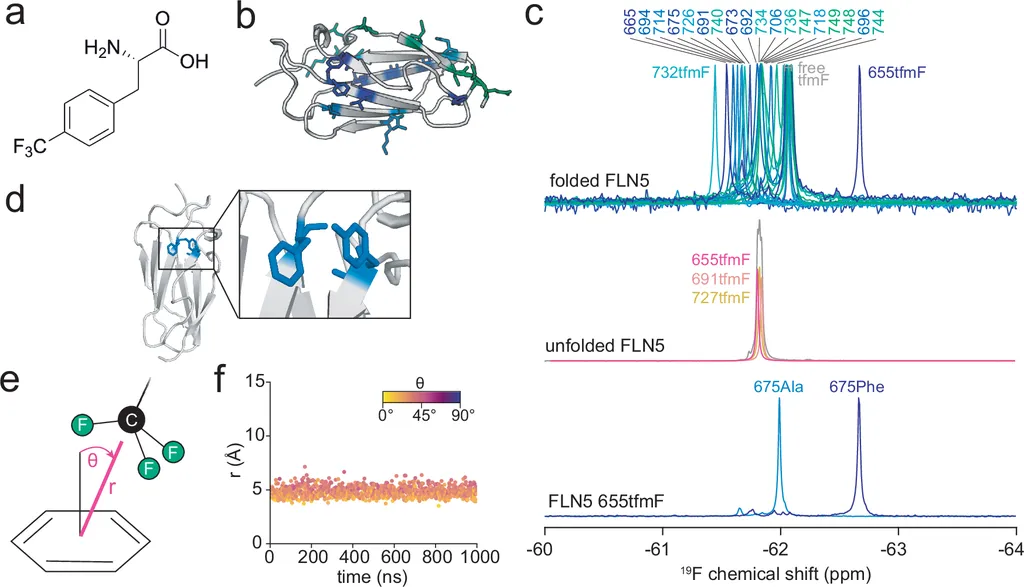In the realm of biomaterial science and drug delivery systems, a groundbreaking study has emerged, offering a novel approach to understanding how cargo molecules behave within hydrogels. This research, led by Chun-Wei Chang from the Max Planck Queensland Centre on the Materials Science for Extracellular Matrices at Queensland University of Technology (QUT) in Brisbane, Australia, leverages fluorine-19 nuclear magnetic resonance (19F NMR) spectroscopy to shed light on the dynamics of payload molecules in gelatin methacrylate (GelMA) hydrogels.
The study, published in the journal *Macromolecular Materials and Engineering* (translated to English as “Macromolecular Materials and Engineering”), addresses a critical challenge in hydrogel drug delivery: the difficulty in studying payload dynamics due to spectral crowding and distortions when using traditional proton NMR spectroscopy. Chang and his team have turned to fluorine-19, an isotope not naturally found in humans but highly receptive to NMR, to incorporate into molecules of interest. This allows for a clearer examination of payload dynamics within hydrogels.
“By using fluorine-19 as a probe, we can directly measure the rotational correlation time and translational diffusion coefficient of payload molecules, as well as the effective microviscosity of the media,” Chang explains. This method provides a more precise characterization of payload dynamics, which is crucial for optimizing drug delivery systems.
The research focuses on three types of payload molecules: trifluoroethylamine (TFEA, a small molecule), ciprofloxacin (CF, a medium-size molecule), and fluorinated lysozyme (FL, a ≈15 kDa protein). By measuring spin-spin relaxation (T2), the team also probes chemical exchange as an indicator of payload-polymer interactions. This in situ interaction between payload and polymer network offers valuable insights into how drugs behave within hydrogels, which can significantly impact their effectiveness.
The implications of this research are far-reaching. For the energy sector, understanding the dynamics of molecules within hydrogels can lead to advancements in energy storage and conversion technologies. Hydrogels are increasingly being explored for their potential in batteries, supercapacitors, and fuel cells, where the efficient transport of ions and molecules is crucial. By optimizing the design of hydrogels, researchers can enhance the performance and longevity of these energy devices.
Moreover, the techniques developed in this study can be applied to other areas of biomaterial science, tissue engineering, and regenerative medicine. As Chang notes, “The precise characterization of payload dynamics within hydrogels is essential for developing more effective and targeted drug delivery systems. This can lead to better treatments for various diseases and improved outcomes for patients.”
The study highlights the importance of 19F NMR relaxometry and diffusometry in biomaterial science. By providing a clearer picture of how molecules interact with hydrogels, this research paves the way for innovative solutions in drug delivery and beyond. As the field continues to evolve, the insights gained from this study will undoubtedly shape future developments, driving progress in both medical and industrial applications.
In the ever-evolving landscape of biomaterial science, this research stands as a testament to the power of innovative techniques in unraveling the complexities of molecular dynamics. As we look to the future, the potential applications of these findings promise to revolutionize not only drug delivery but also the energy sector, offering new avenues for exploration and discovery.

